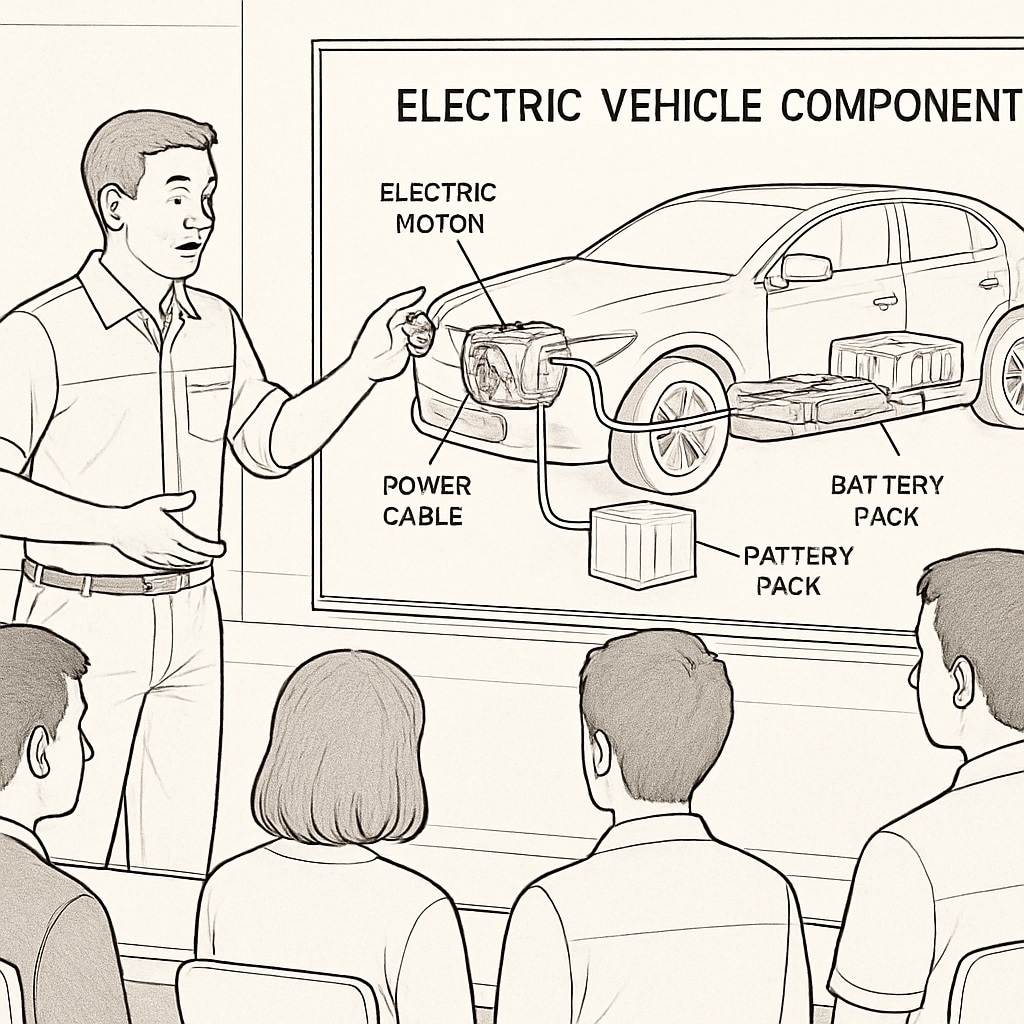Electrical skills, automotive industry, and apprenticeship experiences form a powerful trio that can shape career pathways for young learners. As the automotive industry increasingly integrates advanced electrical systems and technologies, the demand for skilled professionals is growing rapidly. Introducing electrical skill development and apprenticeship-style programs during K12 education can play a pivotal role in bridging the gap between schools and industry, ensuring a steady flow of well-prepared talent for future automotive careers.
Why Early Electrical Training Matters
Electrical systems are at the heart of modern automotive technology, from electric vehicles (EVs) to advanced driver-assistance systems (ADAS). For example, a deep understanding of wiring, circuit design, and troubleshooting skills is essential for technicians working on such systems. Early exposure to these concepts through hands-on learning can spark interest and build foundational knowledge. By integrating electrical training into K12 education, students gain awareness of these high-demand skills and begin exploring potential career paths.

Building Bridges Between Schools and the Automotive Industry
Collaboration between schools and the automotive industry is crucial to creating effective apprenticeship programs. Schools can partner with local automotive companies, offering students real-world experiences that complement their academic learning. For instance, industry professionals can visit schools to conduct workshops, or students can participate in internships at manufacturing facilities where they learn about automotive electrical systems first-hand. These initiatives not only benefit students but also help industries cultivate a workforce equipped with relevant skills.
According to Britannica, the rapid growth of electric vehicles has increased the need for professionals with advanced electrical competencies. By fostering partnerships early, we can address this skills gap effectively.

Key Benefits of Electrical Apprenticeships
Introducing apprenticeship-style programs in K12 education offers numerous benefits, including:
- Skill Development: Hands-on training helps students master technical skills such as wiring, diagnostics, and electrical safety.
- Career Awareness: Exposure to real-world applications encourages students to consider careers in the automotive industry.
- Enhanced Employability: Practical experience gained through apprenticeships makes students attractive candidates for future employers.
Additionally, early apprenticeships foster critical thinking and problem-solving abilities that are essential in the fast-evolving automotive sector. As a result, students gain confidence and a competitive edge as they transition into higher education or the workforce.
Looking Ahead: Preparing Students for the Future
The automotive industry’s shift toward electrification and automation demands a skilled workforce. By integrating electrical training into K12 curricula and fostering industry partnerships, we can prepare students for these future opportunities. Programs like these not only provide technical skills but also instill a sense of curiosity and ambition. As Wikipedia highlights, apprenticeships have long been a proven model for practical skill development and career preparation.
In conclusion, electrical skills, automotive industry experiences, and apprenticeship programs can serve as a transformative combination for young learners. With thoughtful collaboration between schools and industry, we can cultivate the next generation of automotive electrical professionals, ensuring the sector’s continued innovation and growth.
Readability guidance: Use concise paragraphs and lists to summarize key points. Ensure a balance between technical and accessible language, with a focus on practical examples and real-world relevance.


